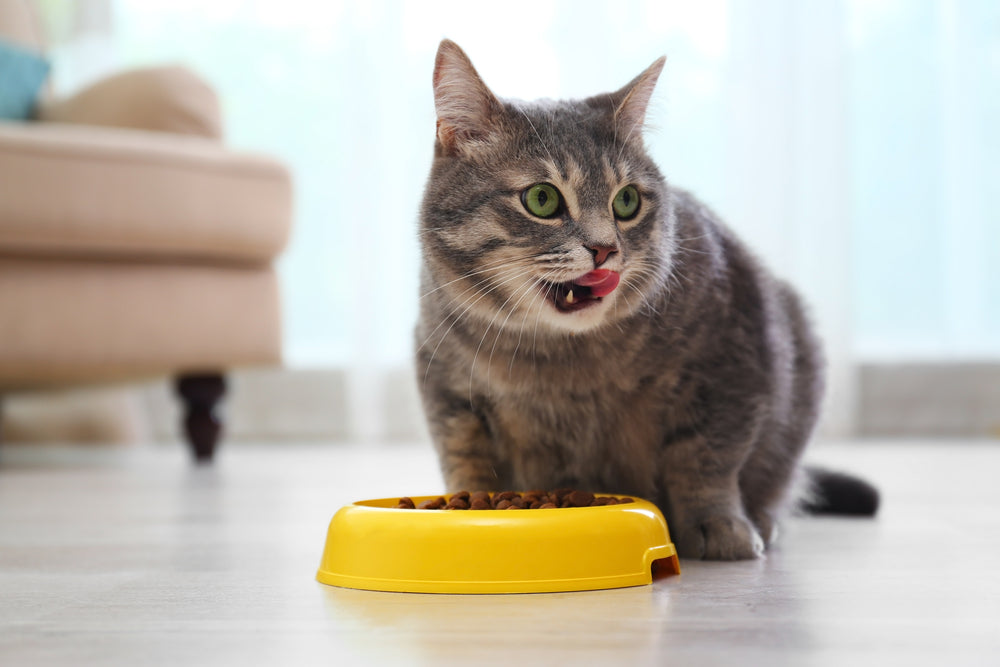Cat Grooming: What You Need to Know Before Attempting to Brush Your Feline

While going about your day, you've probably noticed your cat grooming herself, just licking away. It's what cats do, several times a day. The fact that cats take the initiative when it comes to grooming makes many cat owners think that our kitties have the grooming part completely covered. As awesome as that would be, our feline friends can use a little help from us every now and again.
We're not talking about a full-on salon service here. Just some light maintenance such as brushing and nail trimming can go a long way in keeping your cat looking and feeling good.
It's important to note that some cats will simply not tolerate some (or all) aspects of the grooming process. If there's any risk of injuring yourself or your cat during the grooming process, be sure to contact a veterinarian or professional groomer.
Brushing Your Cat's Fur
Brushing does much more than smoothing out your cat's fur. Regular brushing removes dirt and tangles and also helps keep your cat's skin in top condition by distributing healthy oils across their coat.
Don't forget to check out the condition of your cat's coat before you start digging in with your brush. A healthy coat will be naturally glossy and spring back against your touch. Make sure there are no bald patches and that the skin is free of any wounds or unusual marks.
For short-haired cats, you only need to brush once a week during the non-shedding season. For long-haired cats, it's recommended you brush your cat's coat 2-3 times per week. First, run a comb through your cat's fur to remove any tangles or old hair. Be sure that you're careful around your cat's chest and belly area. When it comes to brushing your cat's tail, start by parting the fur down the middle, then brush gently.
Bathing Your Cat
For the most part, your cat is well-equipped to handle bathing on her own. After all, she's got some of the best cat grooming tools: her tongue and teeth. Your cat shouldn't require baths too often, but if she gets into something sticky or smelly, a bath may be in order. Here's how to bathe your cat without getting scratched or hurt.
First, be sure to only fill your sink or tub with 3-4 inches of water. Cats don't need to be completely submerged to get clean and more water could startle them.
Make sure not to spray water directly into her ears, eyes, or nose. A pitcher or spray hose with low water pressure should be just enough.
Work shampoo in gently. Be sure to use a shampoo made specifically for cats, as human shampoos can dry out your cat's skin. Rinse thoroughly.
Skin Issues
While you've got your cat in the bath, you should take some time to inspect them for any problems. Cats are prone to certain skin conditions, and if you notice something is off during bath time, call your vet ASAP. Skin problems on cats can include:
- Ringworm
- Fleas
- Ticks
- Cat Acne
- Sunburns
- Warts
- Cuts and Scrapes
Clipping the Nails
In the wild, cats use their claws for protection from predators and to catch prey for meals. Cats take great pride in sharpening their claws but for domesticated cat owners, sharp claws can mean ripped-up furniture. Nail trimming can save your furniture without leaving your cat completely defenseless should she get outside.
The first step when trimming your cat's nails is to get your cat used to you touching her paws. Gently massage one of her paws between your fingers and gauge the reaction. Giving her treats as you try to get her used to having her paws handled help too. If your cat is extra skittish, this step may take some time.
When you're both ready for the actual trimming, be sure to choose a calm and quiet location. Try to aim for a time where your cat will be relaxed, such as after meals when she's full and groggy.
Sit your cat on your lap and have her face away from you. Apply gentle pressure to each pad under her toe to get the nail to extend. Then clip, using high-quality nail clippers. Start slowly by clipping only one or two claws in one sitting. If your cat seems comfortable, then proceed. If your cat is stressed and trying to get away, try again the next day.
Avoid cutting the quick – the pink part of a cat's nail – as it houses nerves, blood vessels, and is extra sensitive. Accidentally cutting this area can lead to bleeding. In the event of an accidental cut, bleeding can be stopped with a styptic powder or stick. For a complete guide on trimming your cat's nails, click here.
It's important to be gentle and remain calm throughout the entire nail trimming process. Do not yell at or hit your cat out of frustration. Be sure to reward your cat with treats and cuddles for a job well done, even if you only got one nail trimmed. Once you've gotten the routine down, aim to clip your cat's nails every two weeks.
Keep an Eye on Shedding
Shedding is unavoidable when you have a cat. Some cats shed more than others, and if you have one that sheds a lot you know what it's like to deal with. Lint rollers in every room, and your Roomba is working double-time. It's the price we pay to have cats as family members.
While shedding is a natural occurrence, if it's happening to the point where your cat has bald patches and has significant hair loss, it's time to call the vet. When shedding becomes an issue, it's typically due to an underlying cause such as skin problems, an unbalanced diet, or stress. When in doubt, always call the vet.
Don't Forget the Ears
Another part of your cat that you should be checking regularly during grooming is their cute little ears. Wax and debris can build up and cause hearing problems, along with other issues. It can be easy to forget about their ears, but it's very important to check them out.
You can do this by simply looking at their ears. They should have a bit of hair on them, and the skin is usually light pink. Taking a quick look at their ears can tell you if something is wrong. For example, you may notice redness or even mites or other bugs on their ears. If so, contact your vet immediately and make an appointment.
It may sound odd, but give your cat's ears a sniff, too. This should be easy to do if you have a cuddly cat that's always crawling on your face. If there are any weird smells, it's again time to contact your vet.
You can use liquid ear cleaners to clean out your cat's ears at home pretty easily. This will help prevent future problems. Make sure to only clean the outer portions of the ear. Leave the inner ear to professionals.
Check Their Teeth
Cats are very good at hiding their pain, so it's very important to regularly check out their mouth and teeth. Bacterial build-up can cause tooth problems and gum disease for your cat which is painful for them and will be a costly vet bill for you
One of the best things you can do is brush your cat's teeth. All you need is a cotton swab or a toothbrush with soft bristles and animal toothpaste. If you don't have any handy, you can use salt water. Never EVER use human toothpaste. It can be harmful to your cat.
Cats are fickle, and not as easy to trick as dogs. It may take some trial and error but learning how to brush your cat's teeth will be beneficial for you both.
Wipe Out the Eye Gunk
Have you ever noticed those little crusties in your cat's eyes? If so, you should gently wipe it off when you can. Cats can also develop serious eye issues such as glaucoma and conjunctivities. Make sure to stare deep into your cat's soul occasionally to make sure their eyes are looking healthy.
If you notice cloudiness, inflammation, watering, or they are keeping one eye closed, it's time to get to the vet.
Final Thoughts on Cat Grooming
One of the best parts of having a cat is not having to worry about grooming them all the time. Regular grooming assistance in the form of brushing and checking your cat's skin and coat can help keep your cat looking and feeling her best, as well as detect early signs of skin conditions or diseases.
If your cat gives you a hard time when you're trying to groom them, try bribing them with treats. That way, they'll associate bath time with an award and hopefully refrain from trying to scratch you.
Got a dog too? Check out Dog Grooming 101.
Previous article

Next article

Related posts
View all-

Wet Vs. Dry Cat Food: Which is Better?
As a caring cat owner, you always want the best for your furry friend, especially with their food. You typically have two choices: dry cat food in a bag or canned wet food. Whether you've just brought home a new kitty or are looking to transition to a new food, the decision process can be overwhelming, and understanding the impact of each on your cat's diet is essential. Read Article -

Celebrate National Pet Week: Fun Ideas to Celebrate with Your Pet
National Pet Week is right around the corner, so it's time to plan how you're going to celebrate! While we're sure you celebrate your pet all day every day... Read Article -

5 Simple Tips to Make Sure Your Cat Drinks Enough Water
Ensuring your cat stays hydrated is important, but it can be challenging since many cats don't drink enough water. Dehydration can lead to kidney disease and other health issues. Fortunately, you can encourage your cat to drink more with a few simple changes. Read Article



